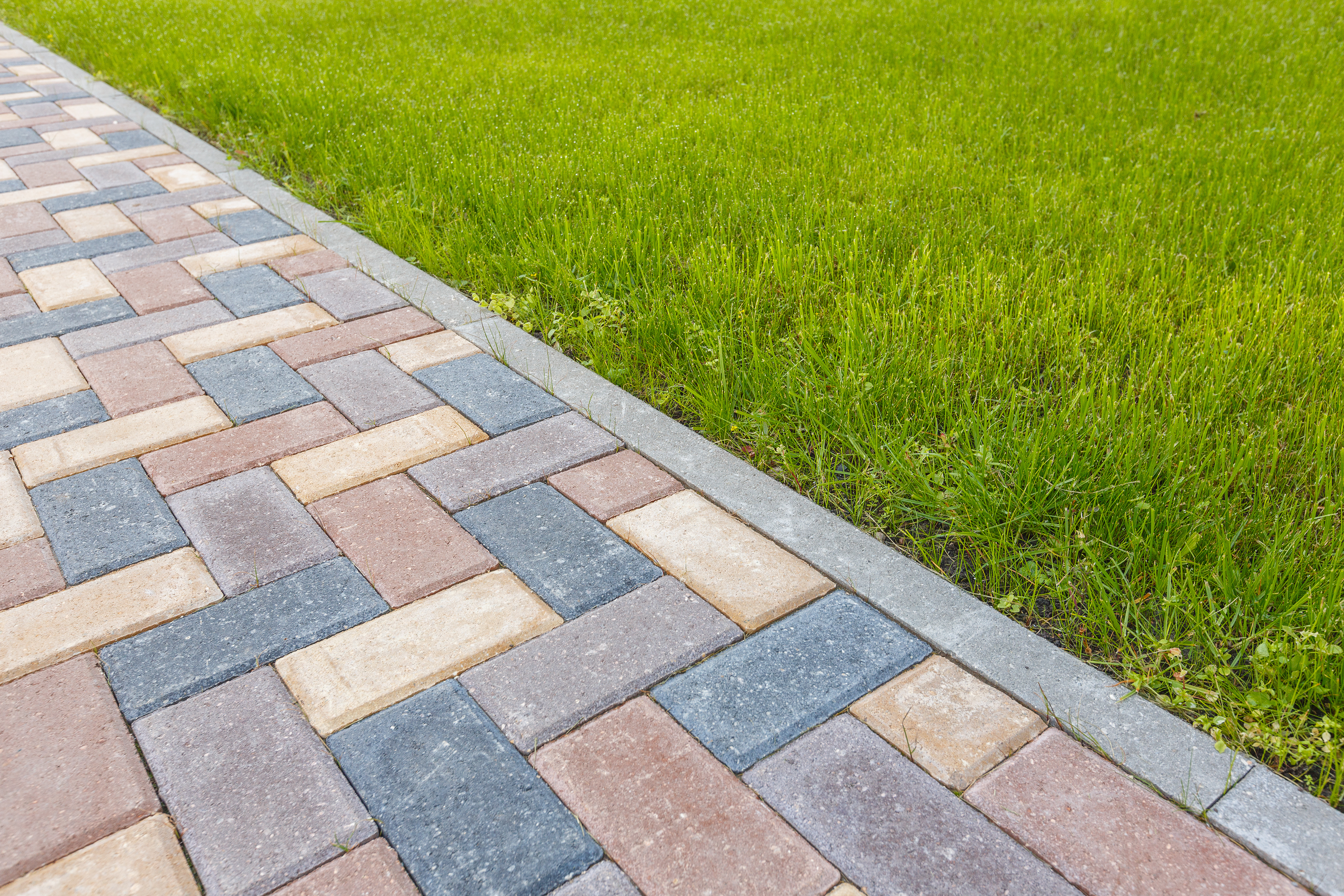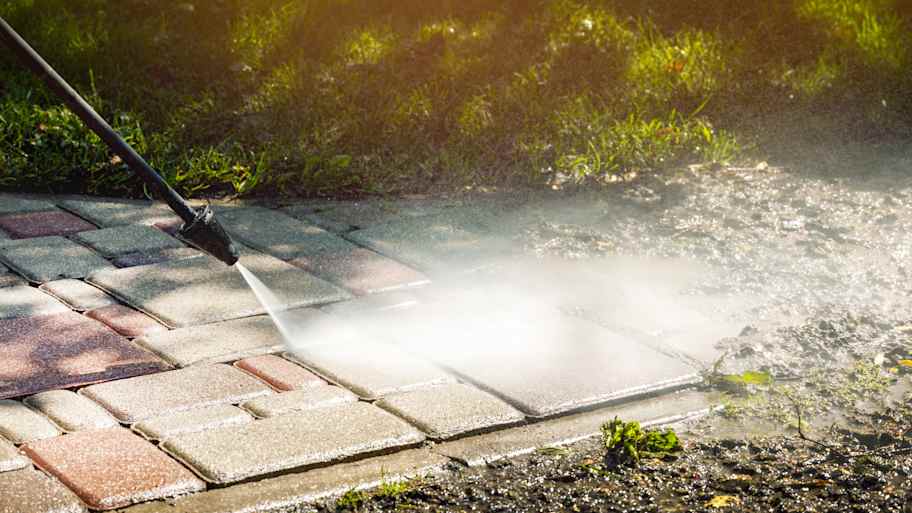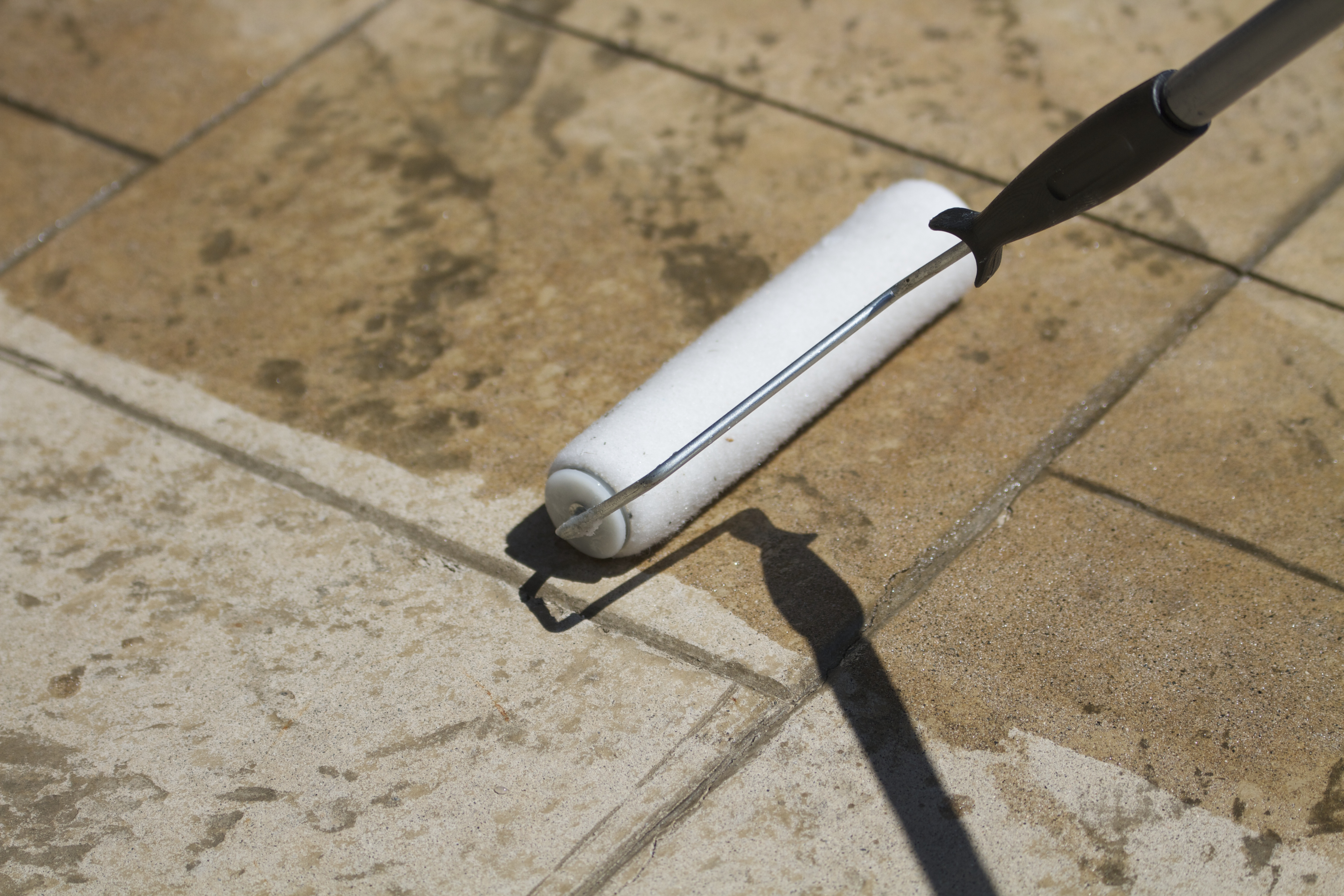
From patios and gazebos to full-on structures, your outdoor space is a blank slate. Learn how much it costs to build and furnish an outdoor room.
Restore your faded pavers using these methods


You can DIY the task of restoring small patches of faded pavers, but larger jobs or ones with damaged pavers are best left to a pro.
You’ll spend $2 to $4 per square foot to have a paver contractor restore your faded pavers.
An expert will have an advanced system to color-match your pavers for an optimal outcome.
Pavers should be cleaned at least once a year and sealed every 2 to 3 years.
Pavers are a dynamic option for walkways, patios, and decks thanks to the wide range of materials and designs available. But they do fade as time goes by, and the beautiful color becomes dull and pale. Even new pavers can fade due to efflorescent deposits. To restore faded pavers yourself at home, try pressure washing the pavers, staining concrete pavers, or using paver sealers.
There are many reasons pavers may fade. Below are the most common ones:
Weather impact: Rain and snow can wash away surface components, causing pavers to fade over time.
High heat: High temperature can also cause certain pavers to fade as time goes by.
Chemical products: The chemical herbicide you use to get rid of moss on pavers may react with the paver material, and it can react with certain pavers and cause the colors to fade.
Efflorescence: Efflorescence is a lime-salt buildup that appears as thin white dust during the first year after laying new pavers.
Restoring pavers costs $2 to $4 per square foot, or $500 to $2,000 per project, depending on the size, material, and the required level of cleaning and restoration. The cost is much higher than handling restoration yourself because professional contractors use an advanced system to color-match your pavers to ensure they’re restored to the best possible condition.
Start by evaluating the situation and checking for other paver problems, such as broken or missing pavers. Pay attention to the level of fading and the size of the fading areas. This can help you determine if DIY restoration is worth your time and energy. Then, proceed to sweep and rinse-wash the pavers clean.
Now, you’re ready to restore your faded pavers. Depending on the type of pavers, one or more of the following methods may apply.

Pressure washing works with most paver materials and is one of the most effective ways to clean pavers. Pressure washing can restore faded pavers if the fading is caused by efflorescence buildup. Use a low-pressure nozzle to wash the pavers gently with water or a paver-specific cleaner. Use a hard-bristle brush to clean the surface, then rinse again with water. Finally, push the sand back into the joints, or apply new paver-binder sand or polymer sand to prevent moss and weed growth.
If your concrete pavers have faded colors, consider staining them to restore their original colors. Simply follow the manufacturer’s instructions and evenly apply the stain to your paver. For the best results, you may apply multiple coats, but be sure to allow each coat to dry before the next one.

After cleaning your paver, using an appropriate paver sealer can brighten the color and offer lasting protection against weather conditions. Pavers come in solvent-based and water-based. Using a roller, evenly apply a sufficient amount of sealant throughout your paver. Wait for each layer to dry, and avoid foot traffic for at least 24 hours after sealing your pavers.
Note that pavers will need to be resealed every 2 to 3 years. Before taking action, consider the pros and cons of sealing pavers.
An effective paver maintenance routine is the best way to prevent pavers from fading. You should thoroughly clean your pavers at least once a year and reseal your pavers every 2 to 3 years. Building an overhead structure above your paver patio to block sun and rain can also help prevent fading. Don’t forget to choose cleaners and sealants that are most compatible with your paver to avoid chemical discoloration.
It’s also important to check and refill the sand between paver joints since they may come loose due to weather and traffic. You also need to refill the sand after cleaning your pavers. This prevents moss and weeds from growing in the gaps and keeps your pavers in place.
Restoring small patches of faded pavers can be easily done by yourself. However, if the restoration area is large with other damages present, or if you plan to clean, restore, and seal an entire paved area, it’s best to hire a paver contractor. Most paver companies charge $500 to $2,000 for a paver restoration project, with pressure washing on the lower end and full restoration and sealing on the higher end.
Here are some things you can do to ensure you hire the appropriate paver contractor:
Get multiple quotes from different companies for the best deal
Look up the contractor’s online reviews and past client testimonials
Find someone nearby to avoid the traveling fee
Find someone who can work with your schedule
Ask about seasonal maintenance services for better pricing
From average costs to expert advice, get all the answers you need to get your job done.

From patios and gazebos to full-on structures, your outdoor space is a blank slate. Learn how much it costs to build and furnish an outdoor room.

A deck skirt can improve the form and function of a deck. Find out what it could cost to install deck skirting in your backyard with this guide.

A porch can expand your living space and add curb appeal. Find out what to budget for the cost of a porch on your home with this guide.

Consider these awning questions when installing or replacing a metal awning or patio cover. The answers can determine who you hire and how long the project takes.

A concrete patio is an affordable addition for outdoor dining and entertaining, but cracks are unsightly. Learn the answer to the question, “Why is my concrete patio cracking?”

If you’re looking to build a deck with minimal harm to the environment, consider using one of these five sustainable decking materials.